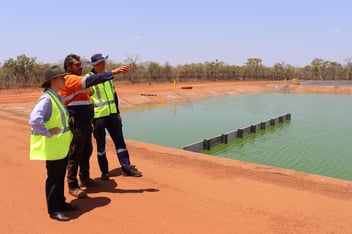Wastewater treatment plants connected to commercial organic waste solutions
Interest in harnessing organic waste for energy generation has never been higher in Australia but even as water utilities make their first forays into that realm they are facing competition.
On-site biodigester units offer a cost-effective alternative to large-scale organic waste treatment facilities, which may face supply problems, according to KMH Environmental Principal Consultant Angus Johnston.
“It’s a bit chicken-and-egg. You need the facilities to process waste material, but to instigate a collection you need somewhere to take it,” Johnston said.
“But you can’t actually build one of those facilities unless you have a secure supply. And that’s quite a dilemma.”
“This has in part been overcome in NSW, because councils are being incentivised to introduce combined food and garden organic collections and to build treatment systems based on those supply contracts,” he said.
“Councils can actually secure supply and put a contract out, and that’s enough to underwrite investment in building facilities.”
But facilities that are unable to contract their supply are set to face financial feasibility issues, including collection and transportation costs, making cheaper, easier alternatives a more viable option, such as on-site biodigester units in commercial kitchens.
“It is going to be out-competed by other solutions,” Johnston said.
“There are several different technological approaches to dealing with food waste on-site, and almost all of them are cheaper than anaerobic digestion at that scale.”
Johnston said many water authorities are permitting on-site biodigester units as an alternative solution to precinct-based organic waste management.
“It’s a very simple piece of equipment. It is really just a little bioreactor that you put food waste in,” Johnston said.
“You throw waste into the chamber, and essentially what’s inside is a specially prepared group of microbes. They pre-digest that waste. It’s accelerated anaerobic digestion. Once it’s digested, it will get flushed away as slightly contaminated water.”
“It’s a way of replacing trucks with sewer lines, effectively,” Johnston said.
However, on-site biodigester units also pose potential issues, particularly regarding contamination build-up.
“It might not be the best solution in some circumstances, especially if the sewage treatment plant is low-tech, or if there are too many units operating in one catchment,” he said.
“Not all of these units use the same microbes or enzymes, and some of them have been knocked back as potentially damaging to the sewer lines.”
Further to this, Johnston said that it could be challenging to get cafes, restaurant and hotels to separate their organic waste accordingly.
“What I am trying to do is communicate to water professionals that it has some opportunities and it has some threats. Let’s start talking about it.”
Johnston will be presenting on commercial food waste at the upcoming Australian Water Association Innovation Forum and Expo, discussing the use of biodigesters before disposal to sewer and treatment plants, and exploring the benefits and challenges.
The event will be held in Sydney on March 10–11. The full program can be viewed here.

